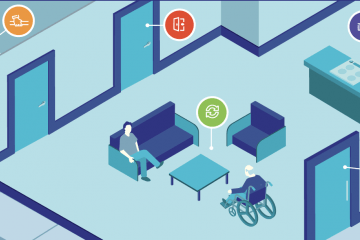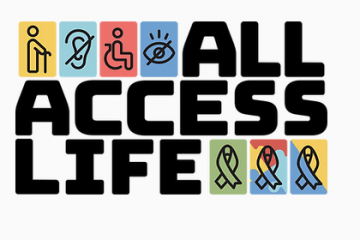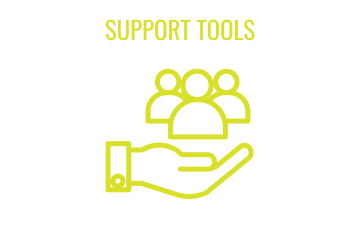My Journey of Finding Accessible Apartments
As an undergraduate student in a major metropolitan city like NYC, the thought of finding a place to live after graduation was very daunting. I didn’t have many options for accessible dorms on campus, so I could only wonder how much more difficult it’d be to find a “real-life adult” apartment that I could afford as a 20-something-year-old.
My apartment search began one year earlier than anticipated. After my senior year of college, I was going to remain in the same university to complete a one-year master’s program. The campus housing application process was entirely different for graduate students than for undergrads, in that university-provided housing wasn’t guaranteed for every grad student. However, I qualified for disability-accommodated housing, so I applied for specifically a wheelchair-accessible apartment. To my dismay, even though the building I got assigned to was classified as “wheelchair accessible,” there were two steps at the building’s entrance with no ramp in sight.
Knowing from experience how tedious and complicated the process is to have ramps placed in front of campus buildings, I knew that this wasn’t a battle I had the time or energy to fight. With there being only three more weeks until I had to move out of my dorm, I forwent trying to get campus housing and sought out to find my own apartment to rent.
In theory, apartment buildings constructed in NYC since 1991 should be accessible to tenants in wheelchairs, thanks to the federal fair housing laws passed in the late 1980s. (The ADA, for the most part, doesn’t apply to residential housing.) Under the Fair Housing Amendments Act, any apartment building that fits four or more families built after March 31, 1991, is required to meet specific accessibility requirements.
However, even in the buildings built within the past five years, it’s nearly impossible to find a fully accessible apartment. In 2019, the New York Times found that only 345 out of 11,987 apartment listings in Manhattan indicated that they were wheelchair accessible — amounting to only three percent. Even if an apartment is listed as accessible, more likely than not, it just means that the building has an elevator — not taking into consideration the one or two steps that may be at the entrance or the narrow doors that a wheelchair can barely fit through. Unfortunately, compliance seems to be an exception rather than a rule.
Luckily, I found my grad school housing on a university-affiliated website where students, alumni, and other affiliates post sub-rental and rental apartment listings. It was a co-op geared towards older adults (I lived with two roommates, one of which, whose aunt owned the apartment), so even though it was an old building, it was recently renovated to meet the needs of the aging residents and owners.
I am in a privileged position because as long as I could get my wheelchair into the apartment, I’d consider it accessible. I can walk freely in an apartment and do not need any other accommodation. However, this apartment didn’t have any other accessible features besides its elevator and automatic door at the main entrance. The bathroom door opened inward, making it impossible to close if you had to bring your wheelchair in— and I couldn’t fit my wheelchair into my bedroom door, so I had to leave it in the living room.
Unfortunately, I ultimately needed to move out of the apartment before the date I had agreed upon—my relationship with my roommates became increasingly toxic. I was also having a difficult time handling my grandma’s cancer diagnosis and her ultimate death while completing a rigorous graduate program.
It was in March of the following year when I decided that I needed a place of my own. I was fortunate that my older sister was also living in NYC and was willing and able to find me a place on short notice. There was a new apartment building developed near her in Brooklyn that specifically advertised itself as being ADA compliant. Until then, I hadn’t realized I could benefit from some accessibility features that I didn’t even think of – such as automatic sliding doors at the entrance, four large elevators, a low-rise bathtub, easy-to-reach electrical outlets, and kitchen counters leveled at wheelchair height.
The building is considered a luxury high-rise, built in 2017, with me being one of the first residents to move in. As shown in my building’s architecture, many accessible features, such as spacious bathrooms and open kitchens, are considered the hallmarks of luxurious new high rises. As demonstrated in CPF’s Accessible is Beautiful campaign, universal design and structural beauty go hand in hand.
The ironic part is that the prices of these apartments remain largely unaffordable for middle- or working-class citizens, a category that covers many people with disabilities. I am incredibly thankful to have the resources to afford and live in an apartment that meets my needs. However, too many folks in our community don’t have the means to do so. Although there are programs like Social Security Disability Income, Non-Elderly Disabled vouchers, and Section 811, such assistance is rarely enough to cover rent. Unfortunately, more affordable buildings tend to be the least accessible.
In particular, during a time when we are spending more and more time at home, it is more important than ever to have a safe and comfortable living situation. In major metropolitan areas like NYC and LA, most apartment showings have moved online. If you’re currently looking for an apartment, use cautionary measures to safely view listings and fill out paperwork. Keep in mind that some properties, like co-ops and condos, have banned moves altogether. Do your due diligence in researching before you make the final decision to move!
Nonetheless, there is a plethora of both federally supported departments and organizations to guide you through your journey to finding a new home. The Fair Housing Act also prohibits landlords from discriminating against you based on disability. A realtor or landlord cannot ask about your disability, limit the showings they show you or increase your rent just because you have a disability. It is unfortunate that finding housing is this difficult, but I believe that it can be done.





